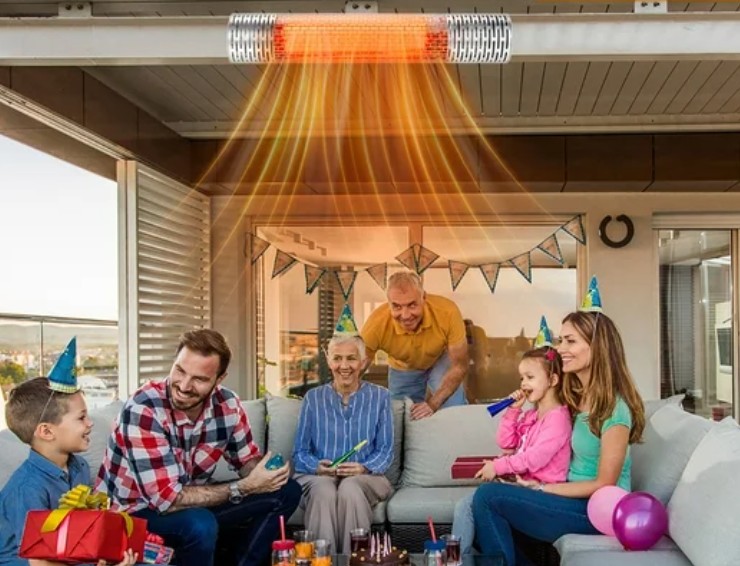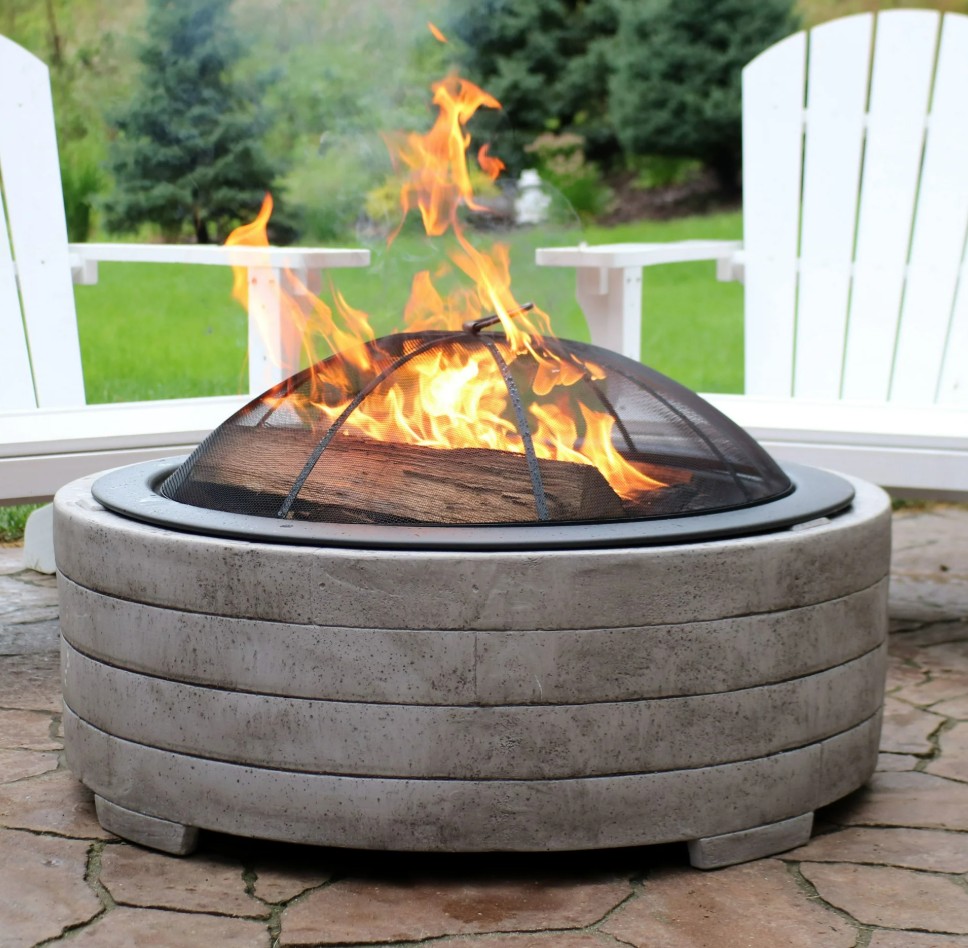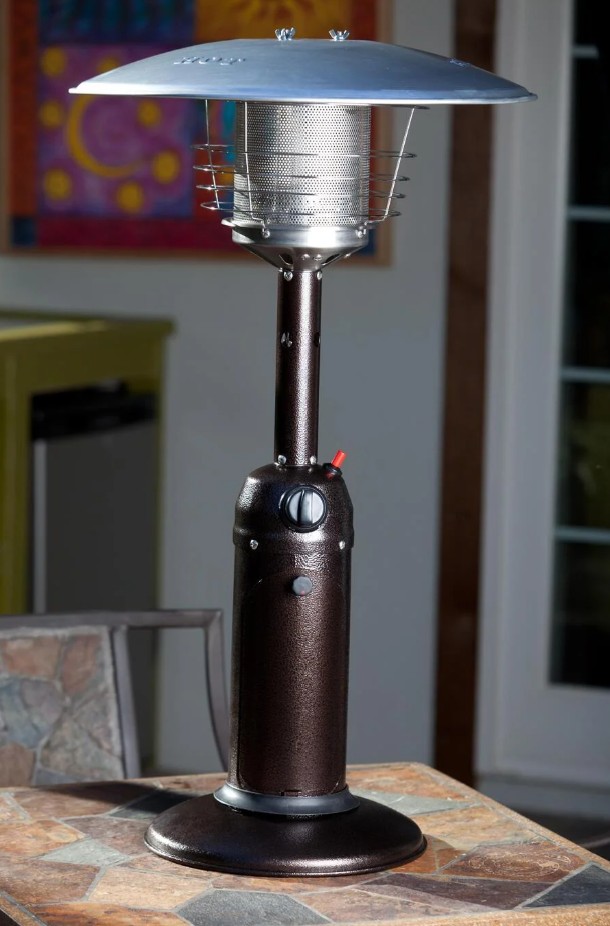As cooler evenings begin to roll in, keeping your outdoor hangout warm and inviting can make all the difference. Whether you’re planning a family cookout or simply want to relax with a cup of tea as the sun sets, selecting the right outdoor heating option helps you make the most of your patio. The big question I often get is: should you go for a patio heater or a fire pit?
Both of these have their perks (and a few drawbacks), so I’ve put together this guide where I sort through heat output, fuel options, vibes, safety, cost, and maintenance. By the end, you’ll have a solid idea of which one is the better match for your space—and your lifestyle.
Getting Familiar: Patio Heater vs. Fire Pit Basics
When you first look at patio heaters and fire pits, they might seem similar—they both push back the chill so you can stay out longer. But underneath, they work pretty differently. Here’s a rundown on how each one fits into backyard life and what you can expect in terms of features.
Patio Heaters: Functional Warmth Meets Simplicity

Patio heaters often look like tall metal lamps with a gas or electric heating element. They’re designed to pump out warmth in a specific direction, making them a great pick for open or covered patios where you need reliable, even heating.
- Main Types: Freestanding, tabletop, wall-mounted, and hanging models
- Fuel: Usually propane or electric (sometimes natural gas)
- Common Uses: Outdoor dining, decks, poolside seating, large get-togethers
Fire Pits: Bringing the Cozy Campfire Home

Fire pits are kind of the old-school option for outdoor heating but with tons of modern upgrades. You can find classic woodburning versions, but most patio fire pits these days use propane or natural gas for a clean, lowfuss flame.
- Main Types: Woodburning bowls, propane fire tables, natural gas fire bowls
- Fuel: Wood, propane, or natural gas
- Common Uses: Lounging, marshmallow roasting, smaller gathering spots
So, let’s now have a look at the features I think you’ll like or need to be aware of when choosing between the two.
Heat Output and Performance
If your main goal is to keep everyone warm, pay attention to how each option dishes out heat. Both patio heaters and fire pits get the job done, but they do it differently.
Patio Heater Heat Performance
- Consistent, Directional Heat: Most patio heaters are designed to send warmth outwards in a wide circle or specifically toward the areas you need most.
- Coverage Area: A typical freestanding propane heater can warm up to 200 square feet. Think of it as enough for a good-sized table or small group.
- Adjustability: Lots of models feature adjustable heat settings and easy ignition for quick startup.
Fire Pit Heat Performance
- Radiant, Ambient Heat: Fire pits radiate warmth in all directions, but the effect can feel softer, especially as you move farther away from the flame.
- Cozy, Localized Comfort: Perfect for tight groups, conversation circles, or places where you want everyone gathered close.
- Weather Factor: Wood and gas fire pits can get knocked around by wind, which will sometimes push the heat away.
If you’re all about keeping large spaces toasty, I’d lean toward a patio heater. For those who want a snug, up-close warmth, fire pits get the job done (plus bring those cool flickering flames).
Fuel Types and Convenience
Thinking about what kind of fuel works in your setup is super important. Nobody wants to lug giant propane tanks around if refills are a pain, and not all yards are woodfire-friendly.
Patio Heater Fuel Options
- Propane: Widely available and portable, but tanks need refilling every 8–12 hours of use.
- Electric: Plug-in models are hassle-free. No refills, but you’ll need an outlet nearby and weatherproof extension cords.
- Natural Gas: Hooked up to your home’s gas line; great for permanent installations, but not portable.
Fire Pit Fuel Options
- Woodburning: Offers a classic look and aroma with crackling flames; requires regular firewood and more cleanup.
- Propane: Instanton, steady flames without the mess; tanks similar to patio heaters.
- Natural Gas: Cleanest and most permanent, but installation can take some time and planning.
The easiest route for most is propane, since tanks are found at nearly every hardware or grocery store. Electric patio heaters are also worth checking out if your space is covered and near power.
Ambiance and Style
If you ask me, this is one spot where fire pits have the edge. Nothing says “cozy” like a real flame. Patio heaters do the job for warmth, but the vibe is more functional than atmospheric.

Fire Pits: Instant Atmosphere
- Flickering Flames: Redorange glow creates a welcoming mood, even if the fire is just for looks.
- Conversation Central: Fire pits often work double duty as coffee tables or gathering points for snacks, games, or drinks.
- Style Range: You’ll find rustic stone, chic metal bowls, modern fire tables, and even glass-covered models for contemporary patios.

Patio Heaters: Sleek Warmth
- Minimal Distraction: Slim, clean lines blend into just about any patio layout; some models can even be tucked into a corner.
- Unobtrusive: Especially with wall-mounted types, the heater almost disappears when not in use.
If the goal is to impress friends or create a loungelike scene, fire pits deliver. But for keeping things subtle and just keeping everyone warm, patio heaters are pretty handy.
Safety Considerations
Both heating options need handling with some care, but safety can weigh into your decision, especially if you have pets, children, or windy weather in your area.
- Patio Heaters: Enclosed heating elements keep flames out of reach; gas shutoff valves add peace of mind. Still, the body gets hot to the touch.
- Fire Pits: Open flames come with obvious fire risk, so you’ll need clear areas around the pit, steady surfaces, and never leave it burning unattended. Watch out for embers with wood-burning models!
Following the manufacturer’s instructions, keeping kids a safe distance away, and always having a fire extinguisher handy help keep things chill and safe.
Cost Breakdown: Upfront and Ongoing
Pricing on patio heaters and fire pits swings pretty widely. I’ve spent a lot of time windowshopping for both, so here’s what you can expect in terms of budgeting.
Initial Purchase
- Patio Heaters: Most freestanding propane models run between $100 and $350. Tabletop or wall-mount electric heaters start around $70 and can hit $400+ for deluxe apps and remote controls.
- Fire Pits: Simple woodburning bowls or ring kits start as low as $50, but attractive propane fire tables or custom gas-plumbed models can jump to $900 or more, especially with designer touches and covers.
Operating Costs
- Fuel: Propane tanks average $20–$25 for a refill, lasting 8–12 hours of burn time. Electric heaters cost just pennies per hour but might not give as much warmth outdoors in very cold weather. Wood can add up if you burn through a lot, unless you have access to free firewood.
- Maintenance: Patio heaters usually need a simple wipe-down; fire pits need regular ash removal or cleaning of burner ports.
Maintenance Tips for Longevity
Staying on top of basic upkeep makes a big difference in how long your outdoor heater or fire pit lasts. Rain and snow are not friendly to metal frames or burners, so simple steps go a long way.
- Patio Heaters: Wipe down surfaces, check for rust spots, and shield sensitive components from the weather with custom covers. Always disconnect propane when you’re done for the season.
- Fire Pits: Keep covered when not in use. With wood fire pits, ash needs scooping after each use, and a quick brush helps keep burner ports on gas models clear. For both types, make sure gas connections stay tight and undamaged.
Where Each Option Works Best
- Patio Heaters: Work well on decks, patios with roof overhangs, outdoor kitchens, or anywhere you want reliable, widespread heat. They’re easy to move and pack away for the offseason.
- Fire Pits: Shine in lounge setups, small seating groups, or anywhere you want folks to gather and hang for hours. They also work in open yards where you have space to keep clear around open flames.
Thinking about your space size and how you use your patio helps pick the winner.
Patio Heater vs. Fire Pit: Quick Comparison
| Feature | Patio Heater | Fire Pit |
| Heat Output | High, directional | Moderate, radiates outward |
| Ambiance | Cozy, flame-centered | Cozy, Flickering flame-centered |
| Fuel Types | Propane, electric, natural gas | Wood, propane, natural gas |
| Safety | Enclosed heat, safer for kids | Open flame, more caution |
| Best Use | Large/dining setups | Lounge/casual areas |
| Maintenance | Low (wipe down/cover) | Moderate (clean, remove ash) |
| Style | Sleek and modern | Rustic, cozy, centerpiece |
Patio Heater and Fire Pit Use Cases
Best Situations for a Patio Heater
- Outdoor dinners keep everyone comfortable at the table
- Poolside parties when the air gets chilly
- High-traffic patios or spaces where safety is a big deal
- Where fire risk is high or flame is not allowed
Best Situations for a Fire Pit
- Late-night chats, s'mores, and storytelling time
- Small group hangouts where everyone wants to cozy up
- Creating a stylish focal spot on your deck or patio
- Spaces set aside from main traffic areas where open flames are okay
Common Mistakes and How to Avoid Them
- Ignoring Fuel Supply: Always check your tank or wood pile before gatherings. Nothing kills the fun faster than running out of heat.
- Improper Placement: Don’t stick heaters or fire pits too close to walls, fences, or anything that can scorch or catch fire. Stick to the manufacturer's distance recommendations (usually at least 3 feet away from anything flammable).
- Skipping Weather Protection: Outdoor covers are affordable and helpful to avoid rust, stains, or bugs making a new home.
Frequently Asked Questions
Here are answers to the questions I hear most about patio heaters and fire pits:
Which produces more warmth, a patio heater or a fire pit?
Most of the time, a patio heater pumps out more direct heat, especially for bigger gatherings where you need to fight off a real chill. Fire pits are better for small areas and create a cozy perimeter.
Is a patio heater or fire pit safer with children and pets around?
Patio heaters get my vote for family settings since the heat source is enclosed and higher up. Less likely for curious hands or paws to get close.
Can I cook over either one?
Wood fire pits work for roasting marshmallows and even hot dogs, while patio heaters (and gas fire pits) are not made for cooking. Not safe or easy, and they’ll get super messy.
Do these work under a covered patio?
Electric patio heaters are usually fine with some clearance. Propane heaters and fire pits (especially open ones) need solid ventilation to avoid gas buildup. Always follow the manufacturer’s rules for safety.
Which is easier to maintain?
Patio heaters just need a quick wipe and sometimes a tank swap. Fire pits need a little more TLC: ash removal, burner checks, and keeping surfaces clean.
Personal Experience and Tips
I’ve used both types in my backyard. When I needed to keep a big dinner group comfy, my patio heater was a lifesaver. But for low-key evenings with friends or when I want a chill spot for reading, nothing beats the soft glow of a fire pit. Mixing and matching both isn’t a bad idea, either.
Final Take: Which Is Right for You?
Choosing between a patio heater and a fire pit boils down to your patio setup, group size, and how you like to use your backyard. Patio heaters are super useful for no-fuss warmth, especially for bigger gatherings and dining areas. Fire pits add an extra level of ambiance, perfect for those relaxed nights when the vibe matters most.
Walmart and most other big box stores offer plenty of both styles, so it's easy to check specs, read reviews, and find something that fits your space and budget. And if you're interested in DIY solutions, local hardware stores often have fire pit kits so you can make your gathering spot with a bit of creativity. Adding outdoor rugs, cozy seating, and lighting also goes a long way to making your outdoor space enjoyable well into the evening.
Do you have a favorite type or a creative way to heat your patio? Drop your tips or stories below! If you’re ready to get cozy outdoors, now’s a pretty good time to browse heaters and fire pits at Walmart or your store of choice. Warm evenings are just around the corner!



